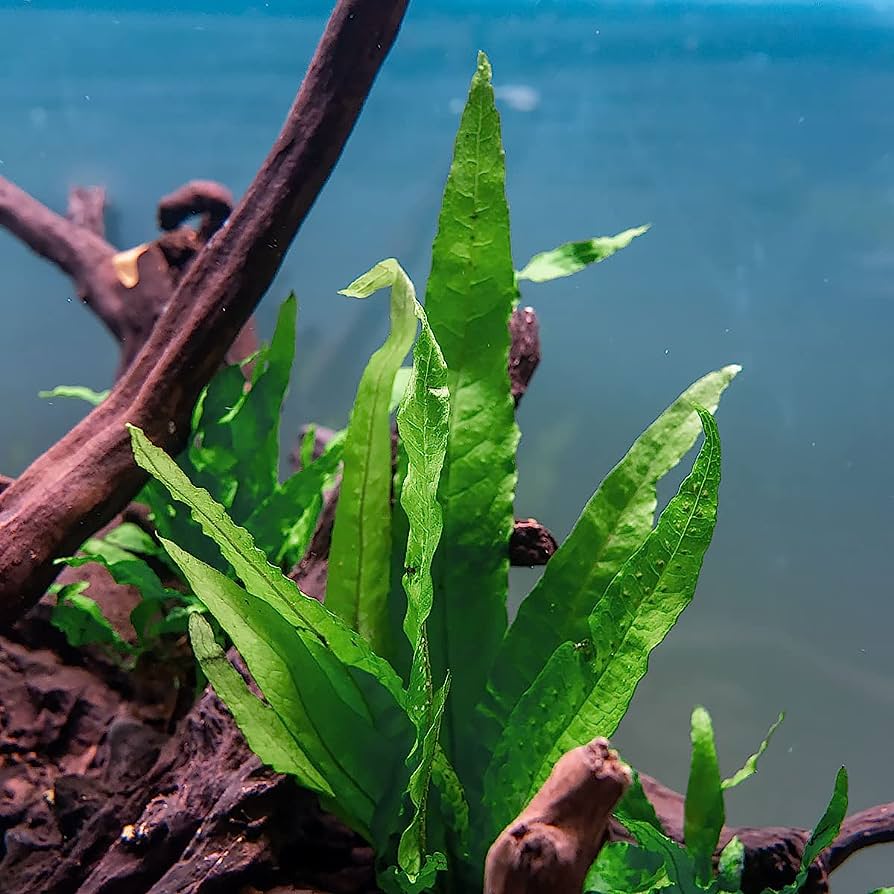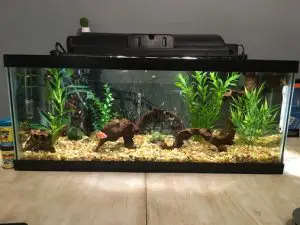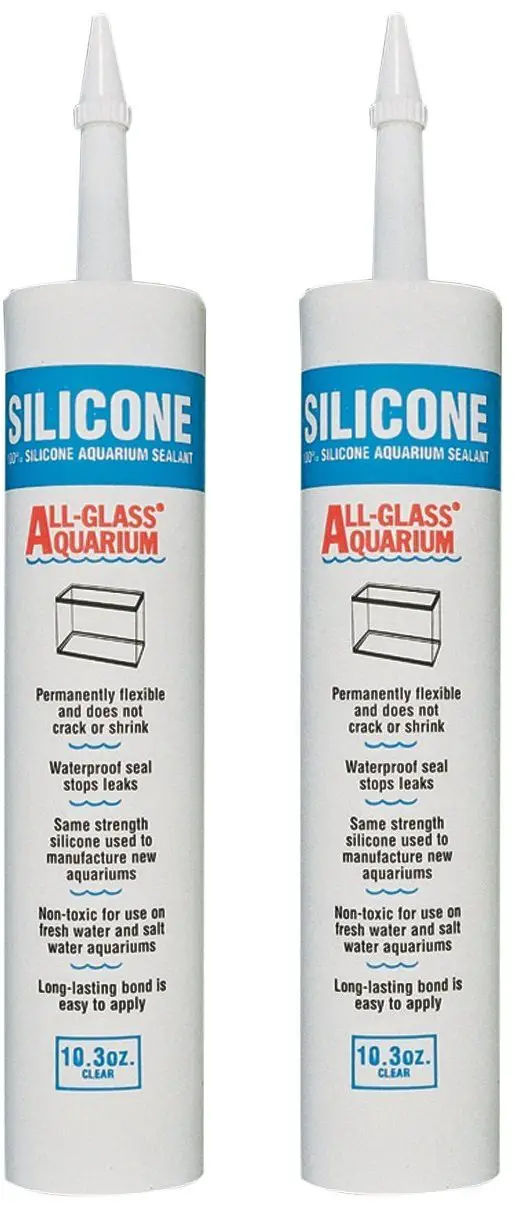Java Fern Thrives in Gravel: Here’s How to Plant It Correctly
Yes, java fern can be planted in gravel. Java fern is a popular freshwater aquarium plant that is easy to maintain and can grow in a variety of conditions.
It is a popular choice for aquascaping due to its hardiness and striking appearance. One question that often arises is whether java fern can be planted in gravel. The answer is yes, java fern can be successfully planted in gravel as long as the rhizome is not buried.
The rhizome should be attached to a piece of driftwood or rock and placed on top of the gravel to allow the roots to take hold. Java fern requires low to moderate lighting and can benefit from occasional fertilization. With the right care and attention, java fern can thrive in a gravel substrate and add beauty to any aquarium.

Credit: www.aquariumcoop.com
What Is Java Fern?
Java fern is a popular aquatic plant that is well-known among aquarium enthusiasts for its hardy nature and unique characteristics. It is a versatile plant that can grow in a variety of conditions, making it an excellent choice for both beginners and experienced aquarium keepers alike.
Overview Of Java Fern Characteristics
Java fern, scientifically known as microsorum pteropus is a small, slow-growing plant that’s native to southeast asia. Here are some key characteristics of this freshwater plant that sets it apart from the rest:
- Java fern is an easy aquarium plant as it can grow in varying water conditions, lighting, and different water hardness.
- It has long, flowing leaves that can grow up to around ten inches in length, giving it a beautiful, exotic appearance.
- Java fern has a distinct root system called a rhizome that it uses to anchor itself to gravel, rocks, and driftwood. The plant can be tied to driftwood, too.
- The leaves of java fern are dark green and can be either smooth or slightly uneven, giving it a natural and lush look.
- Java fern can grow up to 12 inches in height and 8 inches in width when fully mature.
- Java fern is an excellent plant to add to any aquarium because of its numerous benefits, including its ability to remove toxins from the water, produce oxygen, and even reduce nitrate levels.
- There are different variations of java fern that include needle, windelov, and trident.
Importance Of Understanding Its Features Before Planting
Before planting java fern in an aquarium, it’s important to have a clear understanding of its unique features. Here are some reasons why:
- Java fern has a slow growth rate, and it’s important to have patience when waiting for the plant to mature.
- Java fern has a distinctive rhizome that shouldn’t be buried in gravel; otherwise, the plant will rot and die.
- Java fern can be attached to rocks or driftwood laid on the gravel to securely anchor the plant and the rhizomes above the gravel.
- Java fern shouldn’t be planted too deep in the substrate because it will disconnect the plant from the rhizome, causing it to die.
- It is also important to avoid using copper-based chemical fertilizers as it is harmful to java fern.
Java fern is an excellent freshwater plant that’s easy to care for, hardy and has numerous benefits to add to any aquarium. As an aquarium enthusiast, it’s important to understand the unique features of java fern before planting. Remember to avoid planting it too deep, burying the rhizome, or using any copper-based fertilizer.
With these tips, you can enjoy the beauty of this unique freshwater plant in your aquarium.
Why Java Fern Thrives In Gravel
Explanation Of Why Gravel Is The Best Substrate For Java Fern
Java fern, known scientifically as microsorum pteropus, is a popular choice for aquarium enthusiasts due to its unique shape and hardiness. When it comes to choosing a substrate for your java fern, gravel is the ideal option. Here’s why:
- Java fern is a type of rhizome plant that obtains nutrients through its roots. Gravel allows the roots of the java fern to penetrate through it, which provides a stable anchor and facilitates nutrient uptake.
- Unlike soil, which can compact over time, gravel maintains consistent pore space and does not hold excess water. This ensures proper gas exchange and prevents the growth of anaerobic bacteria, which can be harmful to aquatic life.
- Gravel provides a conducive environment for beneficial bacteria like nitrifying bacteria. These bacteria help to break down harmful waste products and convert them into forms that can be easily absorbed by the roots of the java fern.
Benefits Of Using Gravel
Apart from providing an ideal substrate for java fern, using gravel in your aquarium has several other benefits. Here are some of them:
- Gravel adds aesthetic appeal to your aquarium and comes in various colors and textures that allow you to customize the appearance of your tank.
- Gravel acts as a mechanical and biological filter, trapping debris and providing a surface area for beneficial bacteria to colonize.
- Gravel is a cheap and readily available option, making it accessible for everyone regardless of their budget.
Brief Comparison With Other Planting Substrates
While gravel is the ideal substrate for java fern, there are other options available. Here’s a brief comparison:
- Sand: While sand looks great, it compacts easily and does not provide enough pore space for root penetration. This makes it difficult for java fern to anchor themselves and obtain nutrients.
- Soil: Although soil is nutrient-rich, it can become compact over time and can seep out of the pot and into the water column. This can cloud aquarium water and negatively impact water quality.
- Clay: Clay-based substrates provide a good substrate for growing aquatic plants. However, they can lack pore space, and their ability to maintain their structure and porosity can deteriorate over time.
Gravel is the best substrate for java fern due to its ability to provide root anchorage, facilitate nutrient uptake, and promote the growth of beneficial bacteria. Additionally, using gravel in your aquarium provides aesthetic appeal, acts as a filter, and is a cost-effective option.
While there are other planting substrates available, none compare to the benefits of using gravel.
Preparing The Tank
Can Java Fern Be Planted In Gravel: Preparing The Tank
Java fern is a versatile and hardy plant that can be easily grown in a variety of setups, including gravel. To ensure a healthy and thriving plant, it is essential to prepare a suitable tank. This section discusses the equipment required, cleaning and conditioning of substrate, and setting up the tank.
Required Equipment
Before starting, you need to collect the necessary equipment for planting java fern in gravel. Here’s what you will need:
- Aquarium gravel: Java fern can be planted in any type of aquarium gravel.
- Java fern: The plant itself should be healthy and free from damage.
- Tweezers: You need tweezers to hold and maneuver the plant during planting.
- Bucket: For cleaning and conditioning the substrate
- Water: Whether tap or treated, you will need enough water to fill your tank.
Cleaning And Conditioning Of The Substrate
The substrate of the aquarium plays an essential role in plant growth, and it is crucial to clean and condition it before planting. Follow the steps below:
- Place the aquarium gravel inside the bucket and rinse it thoroughly with water.
- Fill the bucket up with water and let the gravel soak in it for a day or more.
- During this time, the water in the bucket will become cloudy and yellowish due to the impurities from the gravel.
- Using a colander or strainer, rinse the aquarium gravel once more to get rid of any impurities.
- The cleaned gravel is now ready to be used in the aquarium.
Setting Up The Tank
After cleaning and conditioning the substrate, it’s time to set up the aquarium.
- Begin by filling the tank with enough water. Ensure that the water is dechlorinated before use.
- Place the cleaned aquarium gravel at the bottom of the tank. Do not overfill the tank as it will leave little space for planting the java fern.
- Take the java fern and use the tweezers to plant it into the gravel. Ensure that the rhizome of the plant is above the gravel and not buried under it.
- Add any additional decorations along with the java fern.
- Once you’re satisfied with the planting, fill the tank with more water until it reaches the desired level.
- Finally, turn on the aquarium light and filter to begin setting up your new aquatic ecosystem.
By following the above steps, you can successfully plant java fern in gravel and ensure that it thrives in your aquarium.
How To Plant Java Fern In Gravel Correctly
Can Java Fern Be Planted In Gravel?
Java fern is a popular aquatic plant that can be grown in different environments, including tanks with gravel substrates. However, to ensure that java fern thrives in such a tank, it’s crucial to plant it correctly. In this section, we’ll discuss how to plant java fern in gravel correctly.
Selecting The Right Gravel
Java fern can grow in various substrates, including sand, gravel, and even driftwood. For planting in a gravel substrate, it is essential to choose the right type of gravel. Here are a few things to keep in mind while selecting gravel for planting java fern:
- Avoid sharp-edged, rough, or jagged gravel as they can tear the delicate roots of java fern.
- Opt for small-sized gravel, which is around 2-5 mm, as it facilitates root growth and prevents the java fern from floating up.
- Choose a dark-colored gravel, as it serves as an excellent contrast to the bright green leaves of java fern, making it stand out.
Preparing The Java Fern
Before planting java fern in gravel, you need to ensure that it is healthy and free from diseases or pests. Here are some steps to follow for preparing java fern:
- Inspect the plant and trim any dead or damaged leaves.
- Rinse the plant’s roots with freshwater to remove any dirt or debris.
- Cut the rhizome of the plant into smaller sections to allow for better growth and avoid overcrowding.
Placement Of The Java Fern
Once you have the right gravel and have prepared the java fern, it’s time to plant it in the aquarium. Here are the steps to follow for placing java fern in gravel:
- Add a layer of the selected gravel substrate to the aquarium tank.
- Make a small hole in the gravel, where you would plant the java fern.
- Place the plant inside the hole and cover it with gravel. Ensure that the rhizome is not buried entirely.
- Repeat the process for each section of java fern you plan to plant.
- Add water slowly to the tank, so the gravel settles down around the roots.
Maintenance And Care
After planting java fern in gravel, it’s crucial to take care of the plant so that it thrives in the aquarium. Here are some maintenance tips:
- Provide adequate lighting to the tank as java fern requires moderate to bright light to grow.
- Add liquid fertilizers periodically to nourish the plant and promote healthy growth.
- Maintain a consistent water temperature and quality to prevent the growth of algae or bacterial infections.
- Ensure proper aeration and circulation in the tank.
- Monitor the java fern’s growth regularly and prune it from time to time to prevent overcrowding.
Planting java fern in gravel is not a challenging task if you follow the correct process. By selecting the right type of gravel, preparing the plant, and placing it correctly in the tank, you can ensure that java fern thrives in your aquarium.
By providing the right maintenance and care, you can enjoy this beautiful aquatic plant in your tank for a long time.
Troubleshooting
Common Problems That May Occur While Planting Java Fern:
Java fern is a favorite among aquarium plant enthusiasts. It is relatively easy to care for, but sometimes, beginner enthusiasts may encounter problems. Below are some common issues that may arise when planting java fern:
- Java fern appears to be dying: Java fern is a sturdy plant, but it can still perish if not protected. Often, dieback results from newfound instability. Java fern relies on its rhizome to maintain equilibrium. When the rhizome is buried too deep or buried under gravel, it can die. Furthermore, inadequate lighting conditions can cause java fern to wilt, and the leaves may turn brown.
- Java fern leaves are turning brown: If you observe brown java fern leaves, it may be due to inadequate temperature or lighting conditions. With the correct condition, java fern leaves grow, and the plant propagates quickly.
Solutions To These Problems:
While java fern is a resilient plant, beginners to aquarium plant care may encounter problems. However, most of these issues can be quickly resolved. Below are some actionable solutions to some common problems:
- Ensure that the java fern rhizome is visible: Java fern stores energy and nutrients in its rhizome and relies on it for support. Therefore, it is critical to guarantee that the rhizome stays uncovered. Plant the fern on a rock or tie it downsized on a rock to make sure that the rhizome is visible.
- Monitor the lighting: Java fern is a low to medium light aquatic plant. Make sure that your aquarium provides enough light. For deeper aquariums, a led light or an aquarium plant light with at least 10,000 k should suffice.
- Correct temperature: Java fern should be kept in an environment with a temperature range of 20 – 30°c. Under ideal conditions, the plant leaves will grow and divide quickly.
- Use water conditioner: Water conditioner reduces harmful chemicals found in tap-water such as chlorine, making it easy and safe to use when changing the water in an aquarium.
- Add liquid plant fertilizer: Adding liquid plant fertilizer will provide all the essential nutrients that the plants need for growth.
Growing java fern in gravel can be easy, but beginners may encounter problems such as brown leaves or dieback. Ensuring that the rhizome is visible, providing enough light and temperature conditions, using water condition, and adding liquid plant fertilizer should solve most problems.
Frequently Asked Questions For Can Java Fern Be Planted In Gravel
Can Java Fern Grow In Gravel?
Yes, java fern can be grown in gravel effortlessly as it is a hardy plant.
What Kind Of Substrate Is Best For Java Fern?
Java fern grows well in any type of substrate such as gravel, sand, or aquarium soil.
Does Java Fern Need Co2 To Grow In Gravel?
No, java fern can grow in low co2 levels without any issue, and it’s recommended for beginners.
How Often Does Java Fern Need To Be Watered In Gravel?
Java fern doesn’t require frequent watering as it can get nutrients from the water column, so once a week is enough.
Conclusion
To conclude, it is safe to say that java fern can be planted in gravel and can thrive as long as the correct conditions are provided. While gravel may not provide an ideal substrate for java ferns, the right amount of nutrients and lighting can make all the difference.
It is important to note that java ferns are hardy and low-maintenance plants, making them suitable for novice aquarium keepers. With proper care and attention, java ferns can grow quickly and enhance the aesthetics of your aquarium. It is recommended to supplement the plant with liquid fertilizers and regularly prune dead leaves for optimal growth.
Whether you are new to aquarium keeping or an experienced hobbyist, java ferns are a beautiful addition to any tank, providing a natural and serene environment for your aquatic pets.






